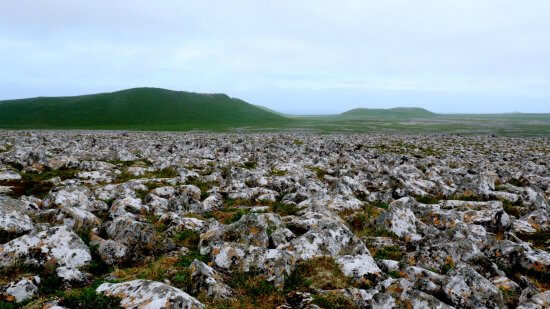
- This event has passed.
American Traditional War Songs: The Ethnopoetic Videos of Sky Hopinka
Mon, July 3, 2017–Sat, December 23, 2017

Important Note: Due to the popularity of our current films, please note that American Traditional War Songs: The Ethnopoetic Videos of Sky Hopinka in the Helen Hardin Media Gallery will be extended until December 23, 2017.
The IAIA Museum of Contemporary Native Arts (MoCNA) is pleased to present the digital works of filmmaker Sky Hopinka (Ho-Chunk Nation of Wisconsin/Pechanga Band of Luiseño Indians). Hopinka’s work is both multifaceted conceptually and formally, with involved tiers of images and narratives. Beautiful and mysterious, thick with color and gesture, his films are filled with notions and confluences around tribal identity, language and land. Most recently Hopinka’s work could be seen in the Whitney Museum of Art’s 2017 Biennial. Says Hopinka, “identity is important to my work, as within myself are layered strata of information, presence, confusion, and history. In similar ways my videos use figures and text that are layered and dense in image and sound, and those tactics are used to assist questioning the simple movements and complications of knowledge, access, and artifact. I am a part of this story, as a tribal member and as the maker, and I take steps to acknowledge my presence and involvement. These layers are an imperfect puzzle that are not about the precision of the connections, but rather the generation of overlapping swathes of emotion, indescribable understanding, and burdened insouciance, for the viewer and myself.”
About the Filmmaker
Hopinka was born and raised in Ferndale, Washington and spent a number of years in Palm Springs and Riverside, California, and Portland, Oregon, and is currently based out of Milwaukee, Wisconsin. In Portland, he studied and taught chinuk wawa, a language indigenous to the Lower Columbia River Basin. His work centers around personal positions of homeland and landscape, designs of language and facets of culture contained within. His films also explore the play between the accessibility of the known and the unknowable. He received his BA from Portland State University in Liberal Arts and his MFA in Film, Video, Animation, and New Genres from the University of Wisconsin-Milwaukee.
His work has played at various festivals including ImagineNATIVE Media + Arts Festival, Images Festival, Courtisane Festival, Ann Arbor Film Festival, American Indian Film Festival, Sundance Film Festival, Antimatter Film Festival, Chicago Underground Film Festival, FLEXfest, and the LA Film Festival. He was a part of the 2016 Wisconsin Triennial and the 2017 Whitney Biennial. He was awarded jury prizes at the Milwaukee Underground Film Festival, the More with Less Award at the 2016 Images Festival, the Tom Berman Award for Most Promising Filmmaker at the 54th Ann Arbor Film Festival, and 3rd Prize at the 2015 Media City Film Festival.
Films
Visions of an Island, HD video 2016, 15:03 minutes
An Unangam Tunuu elder describes cliffs and summits, drifting birds, and deserted shores. A group of students and teachers play and invent games revitalizing their language. A visitor wanders in a quixotic chronicling of earthly and supernal terrain. These visions offer glimpses of an island in the center of the Bering Sea.
wawa, HD video 2016, 6:00 minutes
Featuring speakers of chinuk wawa, an Indigenous language from the Pacific Northwest, wawa begins slowly, patterning various forms of documentary and ethnography. Quickly, the patterns tangle and become confused and commingled, while translating and transmuting ideas of cultural identity, language, and history.
Kunįkaga Remembers Red Banks, Kunįkaga Remembers the Welcome Song, HD video 2014, 09:20 minutes
The video traverses the history and the memory of a place shared by both the Hočąk and the settler. Red Banks, a pre-contact Hočąk village site near present day Green Bay, WI was also the site of Jean Nicolet’s landing, who in 1634 was the first European in present day Wisconsin. Images and text are used to explore this space alongside my grandmother’s recollections. Each serve as representations of personal and shared memory, as well as representations of practices and processes of remembrance, from the Hočąk creation story, to Jean Nicolet’s landing, to the present.
Venite et Loquamur, HD video 2015, 10:45 minutes
A group of students and teachers gather in an historical mansion in the woods of West Virginia for a week-long retreat in spoken Latin. I observe and I participate, navigating the errata and my camera through a language that sounds familiar, yet uncertain, to ears imbued in the heritage of the English language.
Anti-Objects, or Space Without Path or Boundary, HD video 2016–2017, 13:05 minutes
The individual is not an autonomous, solitary object but a thing of uncertain extent, with ambiguous boundaries. So too is matter, which loses much of its allure the moment it is reduced to an object, shorn of its viscosity, pressure and density. Both subject and matter resist their reduction into objects. Everything is interconnected and intertwined.” Kengo Kuma, the title of this video, taken from the texts of the architect Kengo Kuma, suggests a way of looking at everything as “interconnected and intertwined,” as are the historical and the present, the tool and the artifact. Images and representations of two structures in the Portland Metropolitan Area that have direct and complicated connections to the Chinookan people who inhabit(ed) the land are woven with audio tapes of one of the last speakers of the Chinookan creole, chinuk wawa. These localities of matter resist their reduction into objects, and call anew for space and time given to wandering as a deliberate act and the empowerment of shared utility.
I’ll Remember You as You Were, Not as What You’ll Become, HD video 2016, 12:32 minutes
An elegy to Diane Burns on the shapes of mortality and being, and the forms the transcendent spirit takes while descending upon landscapes of life and death. A place for new mythologies to syncopate with deterritorialized movement and song, reifying old routes of reincarnation. Where resignation gives hope for another opportunity, another form, for a return to the vicissitudes of the living and all their refractions.
“I’m from Oklahoma I ain’t got no one to call my own. If you will be my honey, I will be your sugar pie way hi ya way ya hi ya way ya hi yo”—Diane Burns (1957–2006)



